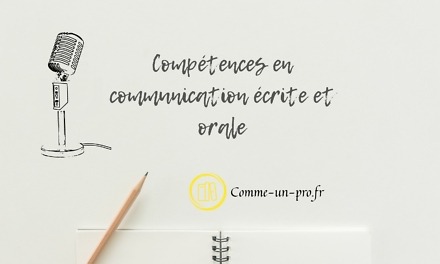The average French employee spends about a quarter of the week going through hundreds of emails that they send and receive every day.
However, despite the fact that we are stuck in our mailbox a good part of our time, many of us, even the most professional still do not know how to use the email appropriately.
In fact, given the volume of messages we read and write each day, we are more likely to make embarrassing mistakes, which can have serious business consequences.
In this article, we have defined the most essential "cybercourt" rules to know.
Include a clear and direct subject line
Examples of a good subject line include “Changed meeting date”, “Quick question about your presentation” or “Suggestions for the proposal”.
People often decide to open an email based on the subject line, choose one that lets readers know you are addressing their concerns or work issues.
Use a professional email address
If you work for a company, you must use your company email address. But if you use a personal email account, whether you are self-employed or like to use it occasionally for business correspondence, you should be careful when choosing this address.
You should always have an email address that has your name on it so the recipient knows exactly who is sending the email. Never use an email address that is not suitable for work.
Think twice before clicking on "reply all"
No one wants to read 20 people's emails that have nothing to do with them. Ignoring emails can be difficult, as many people receive notifications of new messages on their smartphone or distracting pop-up messages on their computer screen. Refrain from clicking "reply to all" unless you think everyone on the list should receive the email.
Include a signature block
Provide your reader with information about yourself. Typically, include your full name, title, company name and contact information, including a phone number. You can also add a bit of advertising for yourself, but don't go overboard with sayings or illustrations.
Use the same font, size, and color as the rest of the email.
Use professional greetings
Do not use casual, colloquial expressions such as “Hello”, “Hi!” or “How are you?”.
The relaxed nature of our writings should not affect the greeting in an email. "Hi!" Is a very informal greeting and generally, it should not be used in a work situation. Use "Hello" or "Good evening" instead.
Use exclamation points sparingly
If you choose to use an exclamation mark, only use one to express your enthusiasm.
People sometimes get carried away and put a number of exclamation points at the end of their sentences. The result may seem too emotional or immature, exclamation points should be used sparingly in writing.
Be careful with humor
Humor can easily get lost in translation without the correct tone and facial expressions. In a business conversation, humor is best left out of emails unless you know the recipient well. Also, something you think is funny might not be to someone else.
Know that people from different cultures speak and write differently
Miscommunication can easily arise due to cultural differences, especially in the written form when we cannot see each other's body language. Adapt your message to the recipient's cultural background or level of knowledge.
It is good to keep in mind that highly contextual cultures (Japanese, Arabic or Chinese) want to get to know you before doing business with you. As a result, it may be common for employees in these countries to be more personal in their writing. On the other hand, people from low-context cultures (German, American or Scandinavian) prefer to go very quickly to the point.
Respond to your emails, even if the email was not intended for you
It is difficult to reply to all the emails sent to you, but you should try. This includes cases where the email was accidentally sent to you, especially if the sender is expecting a response. A reply isn't necessary, but is good email etiquette, especially if that person works in the same company or industry as you.
Here is an example of a response: “I know you are very busy, but I don't think you wanted to send me this email. And I wanted to let you know so you can send it to the right person. »
Review each message
Your mistakes will not go unnoticed by the recipients of your e-mail. And, depending on the recipient, you may be judged for doing so.
Don't rely on spell checkers. Read and re-read your mail several times, preferably aloud, before sending it.
Add the email address last
Avoid accidentally sending an email before you have finished composing it and correcting the message. Even when replying to a message, it's a good idea to remove the recipient's address and insert it only when you're sure the message is ready to send.
Verify that you have selected the correct recipient
You have to be very careful when typing a name from your address book on the “To” line of the email. It's easy to select the wrong name, which can be embarrassing for you and the person receiving the email in error.
Use classic fonts
For professional correspondence, always keep your fonts, colors and standard sizes.
The cardinal rule: Your emails should be easy for other people to read.
Generally, it's best to use 10 or 12 point type and an easy-to-read typeface, such as Arial, Calibri, or Times New Roman. When it comes to color, black is the safest choice.
Keep an eye on your tone
Just as jokes are lost in translation, your message can quickly be misinterpreted. Remember that your interviewer does not have the vocal cues and facial expressions they would get in a one-to-one discussion.
To avoid any misunderstanding, it is recommended that you read your message aloud before clicking Send. If it seems hard for you, it will seem hard for the reader.
For best results, avoid using totally negative words (“failure”, “bad” or “overlooked”) and always say “please” and “thank you”.




